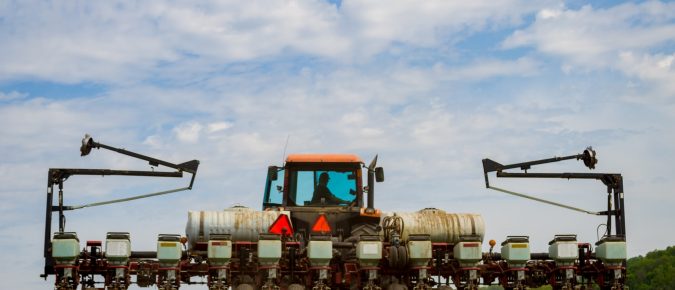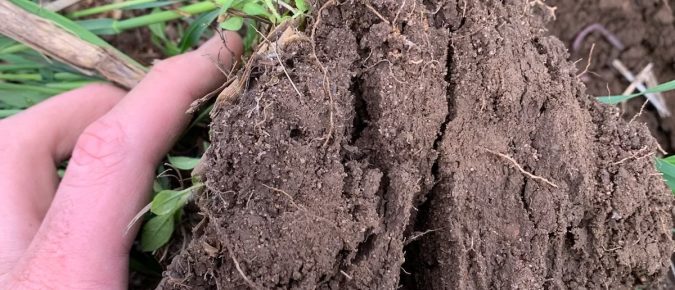The webinar was designed to assist farms and agronomists in their decision-making regarding timing of spring tillage and planting activities and to properly prepare planting equipment for optimal in-field effectiveness.
When we think of nitrogen leaving the fields, we often think of nitrates leached down to groundwater, but the mobility of nitrogen is not just downwards. Nitrogen can also leave the field and be lost to the atmosphere in the form of nitrous oxide, aka laughing gas. But this is no laughing matter.
March is mud month in Wisconsin. While this season may not be particularly pretty on the eyes, the freeze and thaw of the soil presents farmers with an opportunity to seed small-seeded plants like clovers into a fall-established wheat crop.
Data is the currency of the future. What does this look like for farmers? We sit down with Drs. Emily Bick, Extension-funded field and forage crop entomologist with University of Wisconsin-Madison, and Jim Eckberg, a scientist with General Mills, to find out. We talk on how sensors and imaging can help build back biodiversity and soils as well as how industry is working to spur the transition along.
It seems like every week brings another story about carbon credits for farmers. There are many factors to consider before jumping in and enrolling your farm in a carbon program. So what is a carbon credit? A carbon credit is created from a carbon offset, which is an activity that prevents the emission of carbon dioxide or another greenhouse gas to the atmosphere that would otherwise be emitted.
Everyone is talking about soil health, so we thought we should too. We chat a bit about what exactly is soil health with Jamie Patton of UW-Madison’s Nutrient and Pest Management program and Brendon Blank, a farmer and Byron Seeds rep from Ixonia, WI, and importantly, how do you measure progress?
This tool is intended to capture a snapshot of the immediate financial expenses and income that a farm may experience in using practices such as cover cropping and reduced tillage, particularly in grain crop systems.
With winter on the horizon, ensuring that your bags, bunkers, and silos are full to brim is a ready solution for easing worries about winter feed supply. But, for some farmers, the solution to winter feeding and storage is out in the field. We talk bale grazing with Jason Cavadini who, in addition to being the state grazing specialist with Extension, grazes beef cattle near Marshfield and Lynn Johnson a farmer and grazing consultant with the Northwest Grazing Network.
As fall arrives, farmers turn to harvest. Once the dust settles, some fields lay bare while others show signs of life heading into winter. We talk with Kevin Shelley of UW-Madison’s Nutrient and Pest Management program and Scott Carlson, a farmer in northwestern Wisconsin, about the benefits, challenges, and choices of planting winter cover crops.
In this, the first episode of Field Notes, we dive headlong into the practice of interseeding cover crops into standing corn, a practice becoming more popular in Wisconsin.
September 22, 2021 12:30-1:30 pm Local Update Michael (Mike) Ballweg, Extension Crops and Soils Agent Cropping Systems and Practices that Build Soil Carbon Randy Jackson, UW-Madison Agronomy Professor Setting Up the Winter Wheat Crop for Success Shawn Conley, UW-Madison Extension Soybean & Small Grain Specialist

















